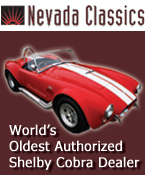
 Not Ranked
Not Ranked

From the Hokey-Ass message board..
Dan Post writes in his '51 version of "Blue Book of Custom Restyling" this:
Today ('51) car colors offer a more invitng variety than ever, since super-irridescence can be added to any but black. Californian custom cras were once generally black, then came the maroon craze, then a spatter of Sherwood Green ('46 - '47 Buick light-bright green) then Harmony Green and Balsam Green ('47 - '48 Stude convertible green) and golden bronze. Refined, highly-aluminized custom mixtures of bronze, green, blue and red are the current selections.
And I search the internet for some more info and found some other message boards where people had this to say (I took the most interesting messages)
"Hi guys, I am a Ford and Lincoln Zephyr guy, and I have searched the Ford color charts pretty thoroughly, and the first metallics I have found were in the 1941 color charts. They were called "polys" and had a very fine metallic glitter to them, mostly in blues"
"Ford did have a metallic silver/pewter color in 1940. There are numerous color photos taken in 1940 of Deluxe Fords in this color out there. However, I suspect it may have been a "spring color", which would not have necessarily have shown up in any paint charts until 1941, which was a rather common practice all the way into the 1970's"
"Metallic paints were available back as far as the early 1930's. There are a number of interesting stories floating around as to how we got metallic paints. The one I believe is accuate, pertains to a car that was painted just in time to be presented at a late 20's or early 30's major auto show.
Seems something failed in the pigment grinding machine, and the paint job had tiny metal flakes in it. At first, the people who were to present the car were horrorfied - but, on second glance, decided it was interesting enough to take a chance on displaying it the way it was. The auto show-going public saw the new exotic finish with these metallic particles, liked it, and the paint mfg's were quick to jump on this and exploit it.
I have seen some genuine "original" metallic finishes. They seem to be much more subtle, and MUCH finer particles, than is the custom today.
No question that the modern two part finishes are vastly superior to paints available in the old days, in every respect - gloss, color retention, durability.
BUT - even the un-trained eye, even without understanding the phenomena, will catch the difference between a "real" lacquer or enamel paint job. The light simply behaves differenty when it bounces off the different type finishes.
Personaly, I like the more subtle look of the "authentic" finishes. If memory serves, Chrysler Corp. and Ford had ENAMEL on their cars, and GMC and Packard favored lacquer, clear up until the mid 1950's when the so called "acrylics" started showing up."
"I believe that the first "public" use of metallic paint, in this case, Dupont Duco Lacquer, was the metallic gold paint job on the 1928 Sampson Miller 91 driven to victory in that year's Indianapolis 500 mile race.
Of course, metallics were certainly used on show cars as early as 1933, when both the Duesenberg "Twenty Grand" and the Pierce Silver Arrow were unveiled at the 1933 Chicago Century of Progress World's Fair.
As for lacquers vs enamels, Ford did use pyoxylin lacquers for body shells and hoods beginning in 1926, and carrying on until at least the mid-30's, while Chrysler seems to have used baked enamel finishes through the 1950's. Ford did use japan enamel (black) for fenders and running board splash aprons through the end of traditional black fenders however (Ford called it their "Bonderized" finishing system).
GM did use enamel for many parts, however. Their specs call for lacquer body finishes, with enamel for front and rear splash panels (between bumpers and body) and wheels through the 1950's."
"I'll have to stand corrected on the earliest use of metallic paint! While in Auburn this weekend for ACD, I walked the ACD Museum with camera in hand. In the Dean Kruse Gallery stands a 1927 Duesenberg Model X sedan, which is listed there as being an all original, unrestored car (neat to see something like that!). It's painted in a now-faded green, which has a very, very fine (almost pearlescent fine) metallic powder in it. So, I guess I've learned something new!"
|


